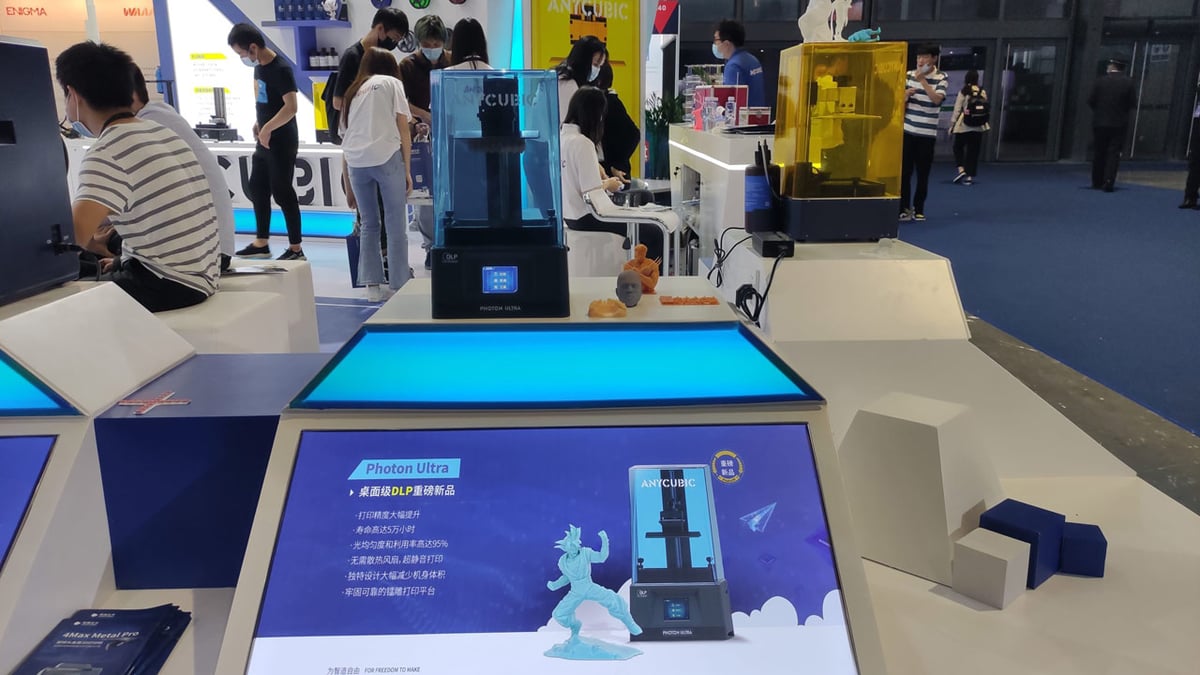In a moment we’ll liken to Spider-Man pointing at Spider-Man, Anycubic’s Vyper desktop 3D printer is finally here. And it looks an awful lot like the Creality CR-6 SE.
At first glance, the two look comically similar. But cast the thought from your mind because, despite the superficial similarities, there actually seems to be plenty different about the Anycubic Vyper to make it worth our attention.
First revealed in 2020 during an Anycubic anniversary stream, the Vyper was but a momentary flash amidst a presentation dedicated to the Photon machines. This week though, during TCT Asia 2021, the Vyper got its full reveal alongside a clutch of fancy new Photon machines and an updated, dual extrusion 4Max Metal (the 4Max Metal Pro.)

Topline features of the Vyper include automatic bed-leveling, a (Bowden) Bondtech-style dual-gear extruder, dual-driven Z-axis, a textured magnetic spring steel bed sheet, a beefy new ARM-based processor, touchscreen UI, and a “double photoelectric limit” switch (Anycubic’s words).
It’s not completely clear what that last thing is. From what we can see from the imagery currently available, it appears to be some kind of coupler on the X-axis carriage, paired with sensors. It’s said to allow the machine to accommodate unevenness in the print bed. No idea how – we’ll have to dig into further documentation and prod and probe a test sample of the machine to understand it better. Handily, one arrived in the All3DP office recently, so we’ll hopefully find the time to answer this question soon.
Bumper Printer Reveal at TCT Asia
We’re excited about the Vyper, and think it brings plenty of tasty features for the price ($359), but the machine is inarguably overshadowed by the Anycubic’s other announcements.
Perhaps tellingly for a company we traditionally associate with desktop 3D printers, Anycubic chose the professionally-focused additive manufacturing show, TCT Asia, to debut these new machines, many of which appear to have higher-end specs and superlatives in their names pitching them at professional users.
Firstly there are the new Photon machines.

The Anycubic Photon Mono X Pro appears to be an evolution on the Photon Mono X large-format resin 3D printer (a fave of ours), here giving deeper integration with the company’s new Anycubic Cloud platform. Ah, yes. There’s a new cloud-based platform coming for some of these new and, we presume, future Anycubic 3D printers. It’s been in the works since as early as September 2020, when the company dropped a hint on social media, inviting users to vote for a mobile or desktop version first.
Photon with DLP
Also on show in Shanghai is the Anycubic Photon Ultra, which looks to take the compact form of the Anycubic Photon Mono, give it a new blue hue, and completely guts the previous printer’s LCD-based insides in favor of new Texas Instruments-powered digital light processing (DLP) technology. If this is as appears, the use of DLP technology in a small form factor printer such as this is a pretty significant shift for Anycubic.
DLP printers are in some ways similar to LCD-based masked stereolithography (MSLA) printers in that there are perceivable pixels, and the layer cure times are not dependent on the number of models on the plate. However, a significant difference can be seen when printing smaller objects and features, with the effective “pixel” size scalable according to the model being printed. Instead of the fixed pixel resolution you get with the other Photon machines, the Photon Ultra should produce finer details and finish on small models (a reason that DLP technology is commonplace in the dental and jewelry industries.)
Better Metal Printing?
Lastly, Anycubic showed off an update to its 4Max Metal machine, showing as the 4Max Metal Pro. It appears that the new machine benefits from dual extrusion, giving some flexibility to the prints and support materials used. Though we’ve not confirmed it for ourselves just yet, chatter on social media indicates that the 4Max Metal Pro can use ceramic support material, contributing to the better performance of complex steel prints that require significant amounts of support structures.
The right ceramic material can survive the sintering process, making it easier to break off the surplus structures after a print has finished. We see such material combinations in professional metal printing systems from companies such as Markforged, so the move seems to be a step in the right direction for Anycubic’s offering.
We’ll bring further details in subsequent pieces as we get them.
Lead image source: Anycubic/PRNewswire
License: The text of "Anycubic Finally Debuts the Vyper Desktop 3D Printer, But Does It Matter?" by All3DP is licensed under a Creative Commons Attribution 4.0 International License.